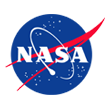
Laboratory Measurements
Observing exoplanets with telescopes is a great way to learn some basic information about their size and composition. But there are questions about exoplanets we can’t answer without visiting them and taking measurements from their surfaces or atmospheres. The closest known exoplanet is at least 4 light years away, however, and the fastest NASA spacecraft, the Parker Solar Probe, would take more than 6,500 years to get there. Since we can’t visit exoplanets yet we use sophisticated equipment and sensors to probe exoplanets without leaving the lab.
